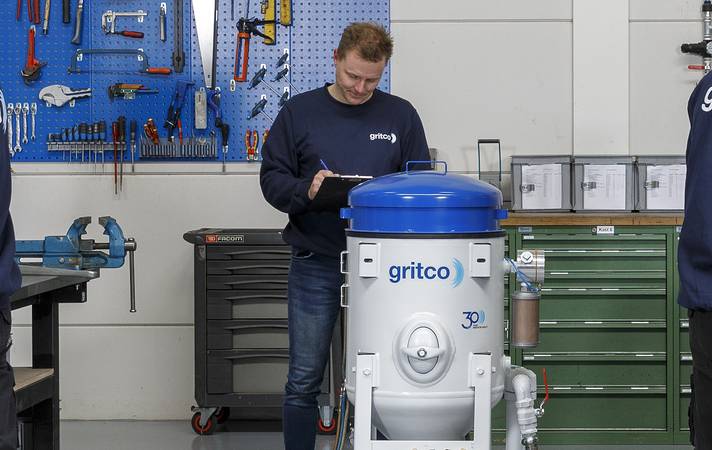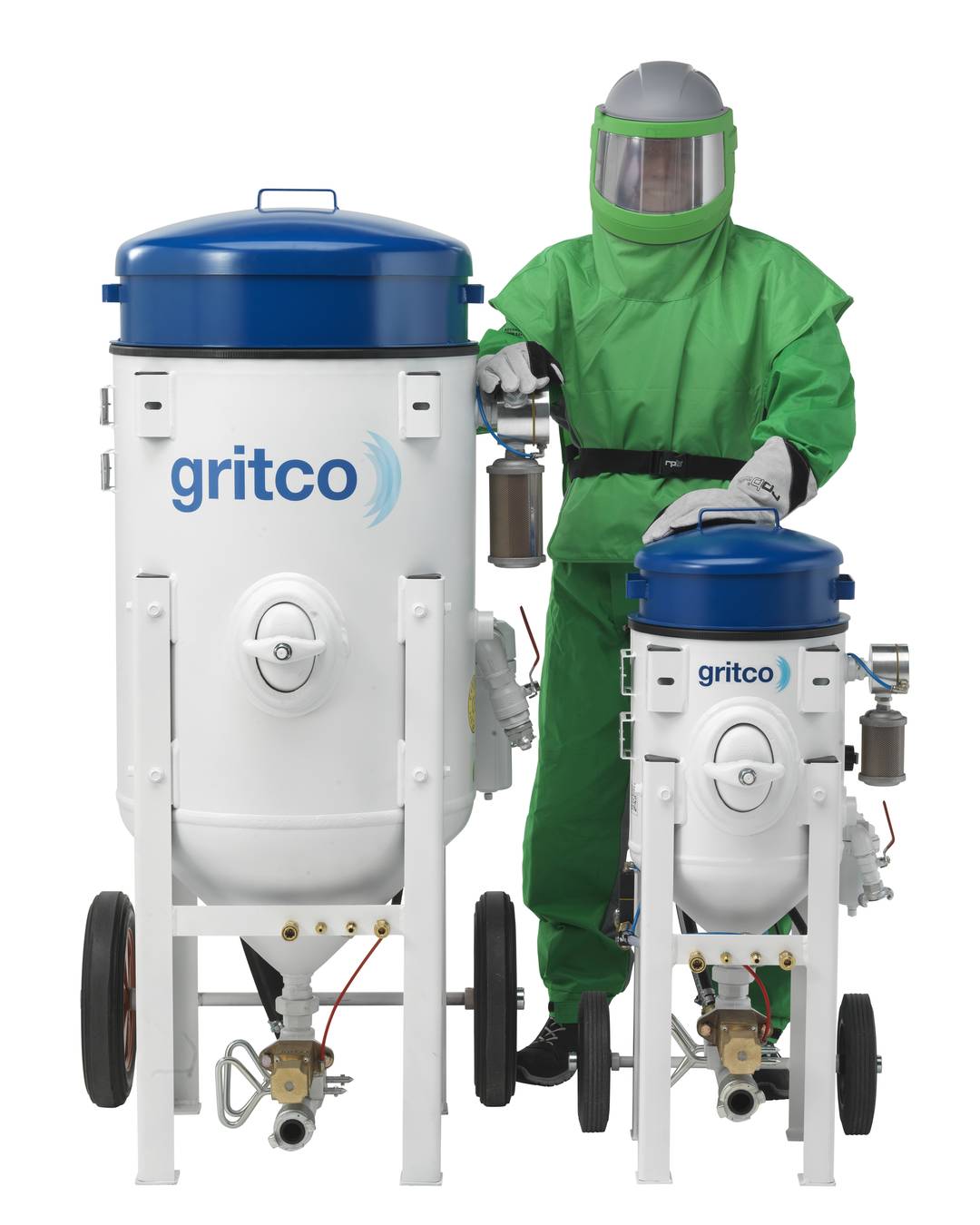What legislation applies to blast pots?
Blast pots are considered a pressure assembly and therefore fall under the European Pressure Equipment Directive 2014/68/EU (PED).
Why is this so important?
It is important for employers to know their legal responsibility for the machines they provide to their employees. They should also be aware that no or only partial compensation is paid by insurance companies in case of accidents with machines which do not comply with the relevant rules and directives!
New blast pots
A blast pot is an assembly of a pressure vessel, valves and fittings and and is therefore considered a pressure assembly (and not a pressure vessel) within the European Pressure Equipment Directive 2014/68/EU (before 20 July 2016 this was 97/23/EC). This means the strict rules and regulations of this directive concern the machine as a whole and not only, as is a common believe, the pressure vessel which is being used to built the blast pot.
To fulfil to the rules and regulations various modules as described in the Directive can be used. A form of approval by a Notified Body (NoBo) is necessary when the maximum operating pressure times the volume exceeds 200 (Ps x V = >200).
ritco blast pots are manufactured according to module B+C2. The B represents the "EC type-examination" The C2 stands for "conformity to type". The inspection of these module B+C2 is done by DNV with identification number 0496. This number must be shown on the machine plate so the validity of the machine's approval can easily be verified.
Recognising a compliant blast pot
A blastpot that has been produced and certified according the Pressure Equipment Directive can be recognized by the following:
- CE Declaration of Conformity from the blastpot's manufacturer stating: a. description of the assembly, b. blastpot model type c. serial number d. PED modules and numbers e. name, number and addresses of the notifying body. Note: Only a declaration from the used pressure vessel is not sufficient! Off course this pressure vessel is also constructed and tested according the directive.
- Type plate of the blast pot's manufacturer showing the number of the notifying body.
- On the pressure vessel you can also find the type plate of the pressure vessel's manufacturer and the number of their notifying body.

Approval for Commissioning
Unlike new machines, the Approval for Commissioning is not (yet) institutionalised on an European scale. Each individual member state has its own rules and legislation. The responsibility rests upon the user of the blastpot, not the manufacturer.
The Dutch situation: According to the Dutch legislation, approval is required when the design pressure times the volume exceeds 1000, or: Ps x V = >1000. In this case a notified boby (NoBo) has to check if the machine is installed and will be used correctly. The manual and the CE Declaration of Conformity (according to PED 2014/68/EU) will definitely have to be presented. Of course all Gritco blastpots come with these two crucial ingredients.
Periodic reassessment
Like the Approval for Commissioning, the Periodic Reassessment is also not institutionalised at an European level. Each member state has its own rules and legislation. The responsibility also rests upon the user of the blastpot, not the manufacturer.
The Dutch situation: Just like other machines, blast pots must be periodically reassessed. In case the design pressure times the volume exceeds 1000, or: Ps x V = >1000 this reassessment has to be done by a Notified Body (NoBo). When this outcome is less, the reassessment can be done by the owner/user. For obvious safety reasons the manufacturer or distributor of the blastpot is usually called upon to perform this task.
The Approval for Commissioning and the Periodic Reassessment do not replace the Pressure Equipment Directive 2014/68/EU (PED) but both complement it!
More information about each Member State's monitoring authorities can be found at the site of the European Commission.
Discover Gritco blast pots
Guaranteed to comply with European Directive 2014/68/EU. Choose safety and peace of mind with a machine that complies with all regulations.
